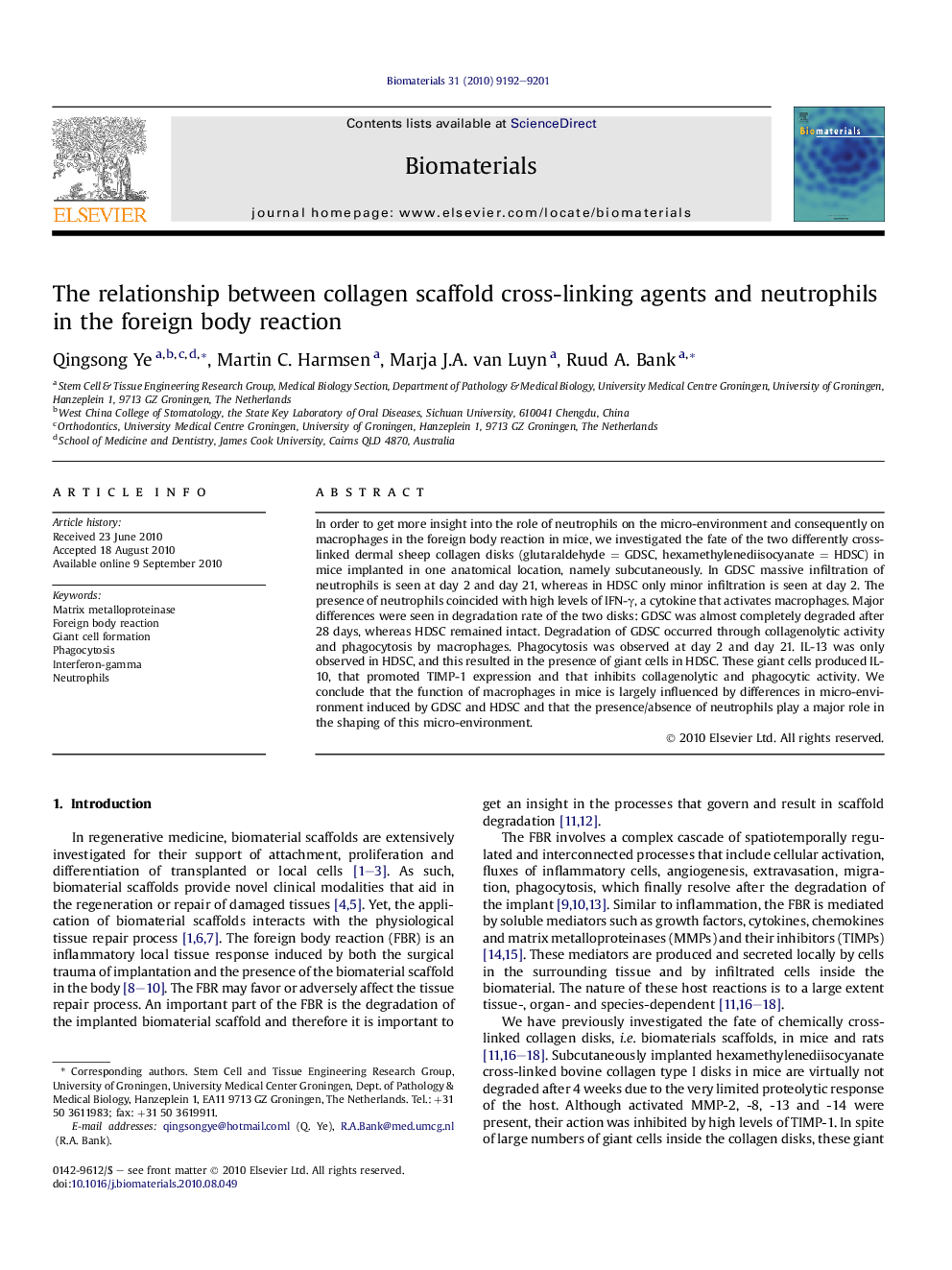| کد مقاله | کد نشریه | سال انتشار | مقاله انگلیسی | نسخه تمام متن |
|---|---|---|---|---|
| 8538 | 597 | 2010 | 10 صفحه PDF | دانلود رایگان |

In order to get more insight into the role of neutrophils on the micro-environment and consequently on macrophages in the foreign body reaction in mice, we investigated the fate of the two differently cross-linked dermal sheep collagen disks (glutaraldehyde = GDSC, hexamethylenediisocyanate = HDSC) in mice implanted in one anatomical location, namely subcutaneously. In GDSC massive infiltration of neutrophils is seen at day 2 and day 21, whereas in HDSC only minor infiltration is seen at day 2. The presence of neutrophils coincided with high levels of IFN-γ, a cytokine that activates macrophages. Major differences were seen in degradation rate of the two disks: GDSC was almost completely degraded after 28 days, whereas HDSC remained intact. Degradation of GDSC occurred through collagenolytic activity and phagocytosis by macrophages. Phagocytosis was observed at day 2 and day 21. IL-13 was only observed in HDSC, and this resulted in the presence of giant cells in HDSC. These giant cells produced IL-10, that promoted TIMP-1 expression and that inhibits collagenolytic and phagocytic activity. We conclude that the function of macrophages in mice is largely influenced by differences in micro-environment induced by GDSC and HDSC and that the presence/absence of neutrophils play a major role in the shaping of this micro-environment.
Journal: Biomaterials - Volume 31, Issue 35, December 2010, Pages 9192–9201